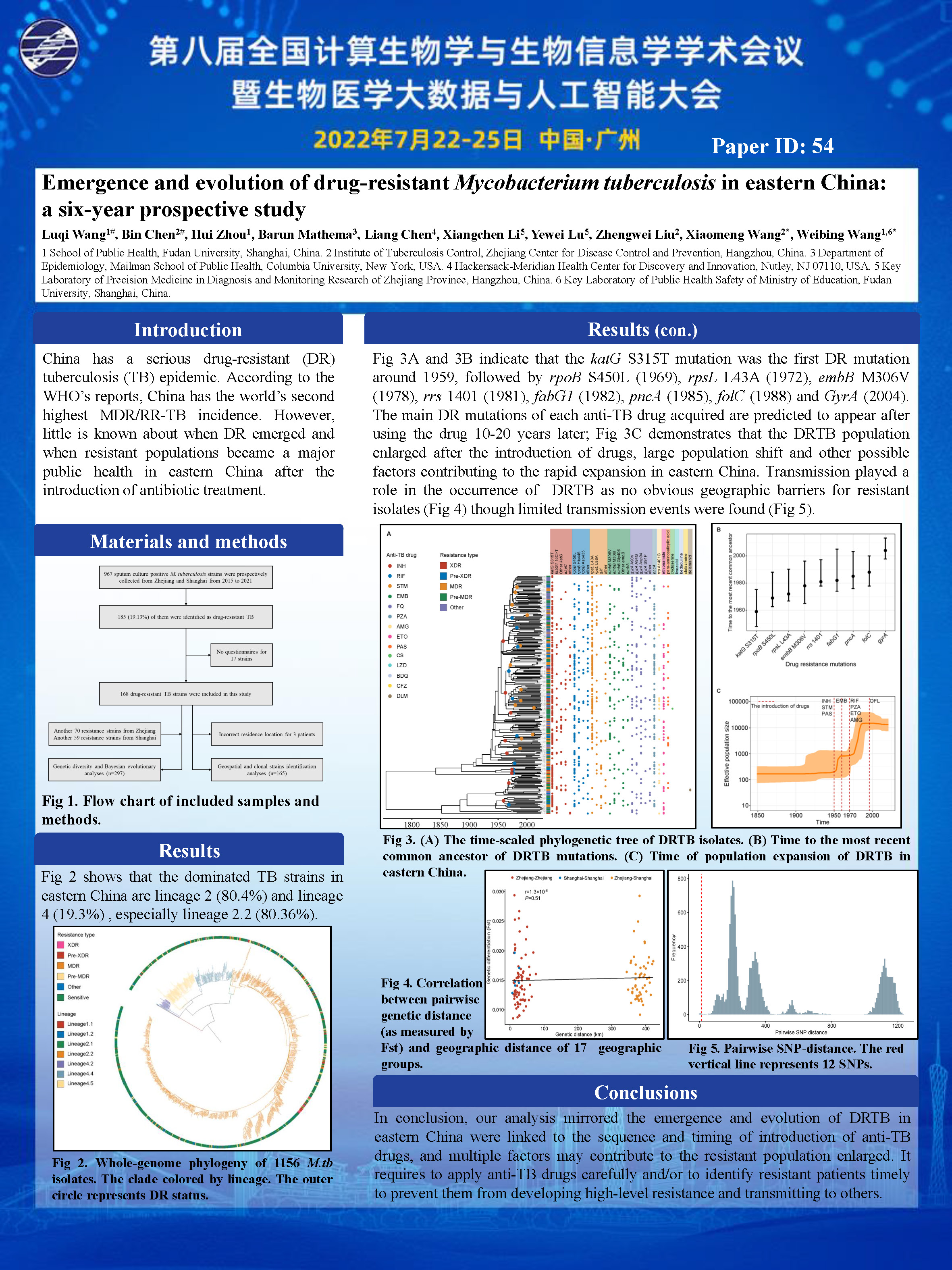Emergence and evolution of drug-resistant Mycobacterium tuberculosis in eastern China: a six-year prospective study
编号:54
稿件编号:12 访问权限:仅限参会人
更新:2022-07-15 10:58:37
浏览:1339次
张贴报告

报告开始:2022年07月23日 12:20 (Asia/Shanghai)
报告时间:20min
所在会议:[E] 张贴报告 » [E] 张贴报告
摘要
Understanding the emergence and evolution of drug resistance can inform public health intervention to combat tuberculosis (TB). In this prospective molecular epidemiological surveillance study from 2015 to 2021 in eastern China, we prospectively collected whole-genome sequencing and epidemiological data on TB patients. We dissect the ordering of drug resistance mutation acquisition for nine commonly used anti-TB drugs, and we found that the katG S315T mutation first appeared around 1959, followed by rpoB S450L (1969), rpsL L43A (1972), embB M306V (1978), rrs 1401 (1981), fabG1 (1982), pncA (1985) and folC (1988) mutations. GyrA gene mutations appeared after the year of 2000. We observed that the first expansion of Mycobacterium tuberculosis resistance population among eastern China appeared after the introduction of isoniazid, streptomycin and para-amino salicylic acid, and the second expansion after the ethambutol, rifampicin, pyrazinamide, ethionamide and aminoglycosides. We speculate these two expansions are linked with population shift historically. By geospatial analysis, we found drug-resistant isolates migrated within eastern China. With epidemiological data of clonal strains, we observed some strains can evolve continuously in individuals and transmit readily in a population. In conclusion, this study mirrored the emergence and evolution of drug-resistant M.tuberculosis in eastern China were linked to the sequence and timing of introduction of anti-TB drugs, and multiple factors may contribute to the resistant population enlarged. To resolve the epidemic of drug-resistant TB, it requires applying anti-TB drugs carefully and/or identifying resistant patients timely to prevent them from developing high-level resistance and transmitting to others.
关键字
Mycobacterium tuberculosis,drug resistance,molecular evolution,phylodynamics
报告人

发表评论